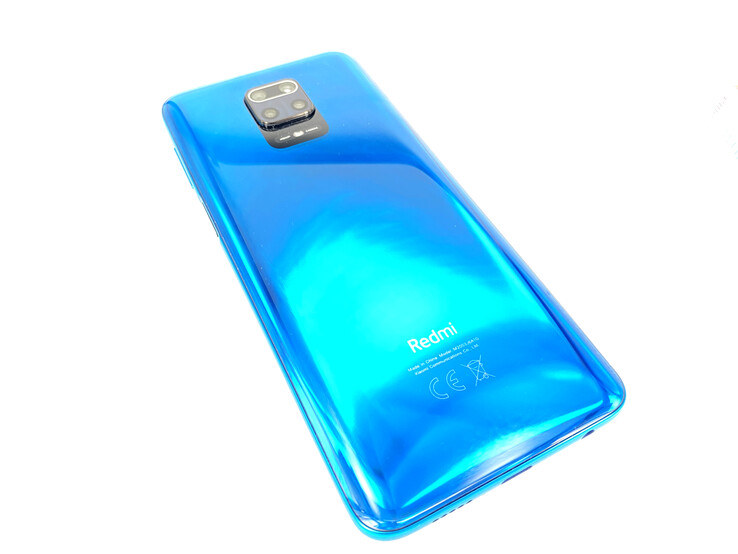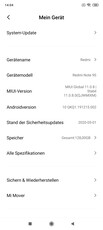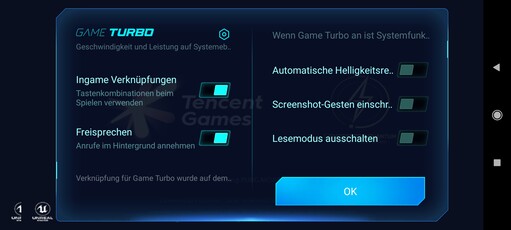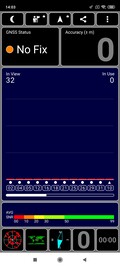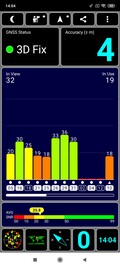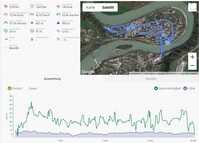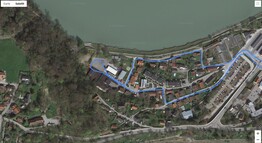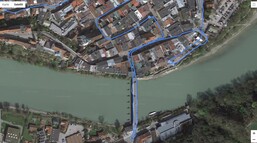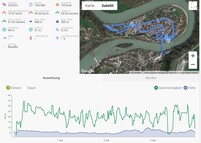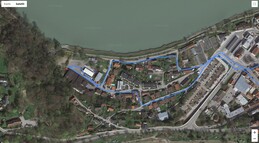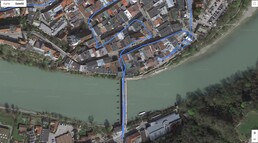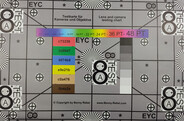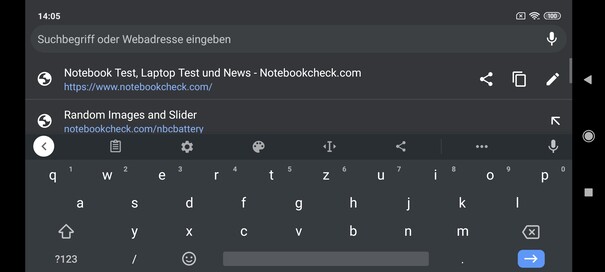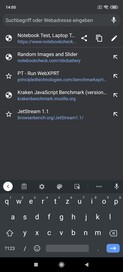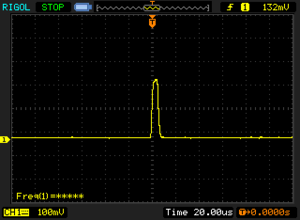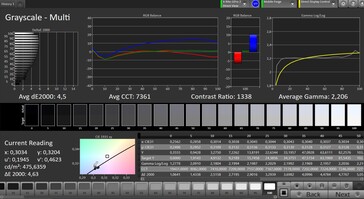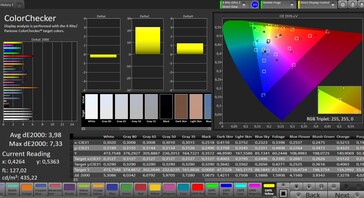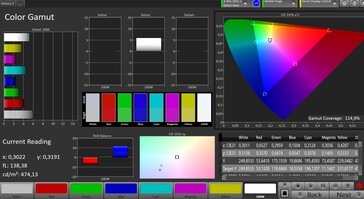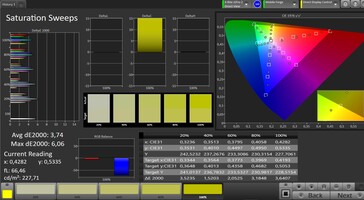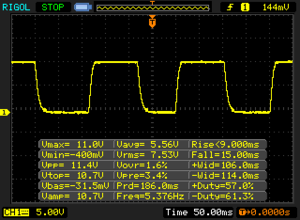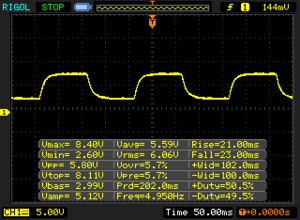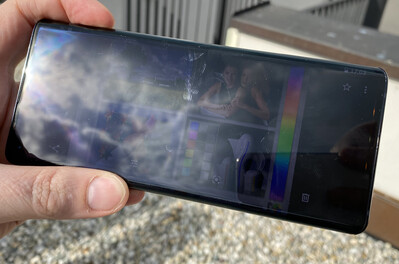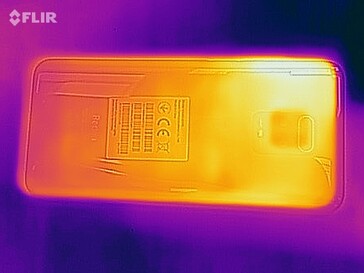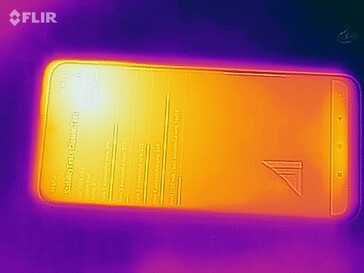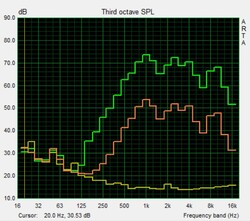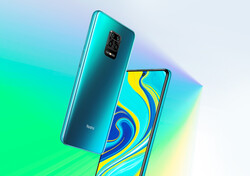Xiaomi Redmi Note 9S Smartphone Review – Large Display, Low Price
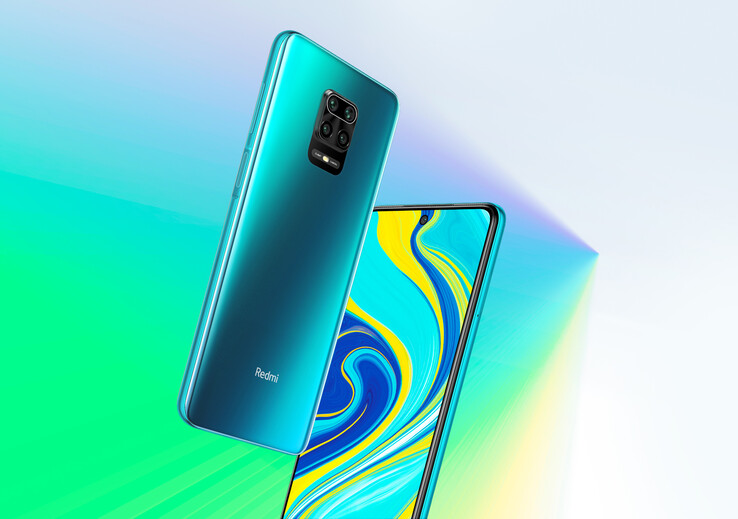
Xiaomi is notorious for releasing smartphones that either outshine their similarly priced competitors or manage to offer a great price-performance ratio over and over (and over) again. The Redmi-range of smartphones is Xiaomi’s most competitively priced series, much more so than the company's main series. The Redmi Note 9S is about to go head-to-head with established affordable mid-range top dogs in the $200-250 range, such as the Huawei P40 Lite or the Motorola Moto G8.
At around $210 you get a smartphone with a large display, 128 GB of storage, and 6 GB of RAM. Interestingly enough Xiaomi lists another identically priced SKU with 64 GB of storage and 4 GB of RAM on its website. Who knows, maybe some customers demand less storage.
Based on our experiences from previous years and a quick glance at the Redmi Note 9S’s specs we can already tell that this is going to get very interesting. Not only does the Redmi Note 9S look very elegant, it also comes with a high-resolution main camera accompanied by a wide-angle and a macro lens for additional versatility, fast storage, and a fast SoC to boot. One thing is for sure: This is going to get quite exciting indeed.
Test Group
Rating | Date | Model | Weight | Drive | Size | Resolution | Price |
|---|---|---|---|---|---|---|---|
| 80.7 % v7 (old) | 05 / 2020 | Xiaomi Redmi Note 9S SD 720G, Adreno 618 | 209 g | 128 GB UFS 2.0 Flash | 6.67" | 2400x1080 | |
| 76.6 % v7 (old) | 05 / 2020 | Motorola Moto G8 SD 665, Adreno 610 | 188 g | 64 GB eMMC Flash | 6.40" | 1560x720 | |
| 81.3 % v7 (old) | 04 / 2020 | Huawei P40 Lite Kirin 810, Mali-G52 MP6 | 183 g | 128 GB UFS 2.1 Flash | 6.40" | 2310x1080 | |
| 75.5 % v7 (old) | 12 / 2019 | Gigaset GS290 Helio P23 MT6763V, Mali-G71 MP2 | 190 g | 64 GB eMMC Flash | 6.30" | 2340x1080 | |
| 80.7 % v7 (old) | 11 / 2019 | Xiaomi Redmi Note 8 Pro Helio G90T, Mali-G76 MP4 | 200 g | 128 GB UFS 2.0 Flash | 6.53" | 2340x1080 |
Case – Glossy Heavyweight
As always, we start with the exterior, and what a start this is! The glossy rear is clad in a deep blue with a matching slightly matte frame. At the front, we find visible yet not overly thick bezels around the display. Other color options include crème white and dark gray.
The Redmi Note 9S is a fairly large and very heavy smartphone. In fact, at 209 g it is one of the heaviest devices in our test group. Handling is very comfortable as all edges and corners are rounded off and we failed to notice any transitions between the various materials and components. The case feels very sturdy, and pressure applied to its front or rear has no effect on the display whatsoever.
Connectivity – Large Storage, no NFC
128 GB of storage is not unheard of for devices in this price range. UFS 2.1 speed, on the other hand, is rather uncommon. 6 GB of RAM is sufficient and adequate. The USB-C port is only connected to a USB 2.0 controller, which is unfortunate, but at least a 3.5-mm headphone jack is available as well. The infrared port at the top of the device is a welcome bonus that enables the Note 9S to be used as a remote for television sets.
Thanks to the dedicated microSD slot both nano SIM slots remain usable at all times. Unfortunately, the device lacks NFC and thus cannot be used for mobile payment systems, such as for example Google Pay.
Software – Xiaomi smartphone with up-to-date Android
The device comes preloaded with Android 10 and Xiaomi’s own MIUI Global v11 on top of it. Security patches were up to date at the time of writing.
Some advanced system settings require a Mi account that needs to be linked to your phone number. However, in most cases you will do just fine without a Xiaomi account. The device comes preloaded with a bunch of third-party advertising applications and free-to-play games that can be completely uninstalled if desired.
Given that the phone is L1 Widevine DRM-certified, streaming content can be enjoyed in high definition resolutions.
Communication and GPS – Wi-Fi 5 included
LTE support is quite extensive and should be adequate for travels to nearby countries. That said the device is not a world phone and might thus not be suited for extensive travels abroad. Make sure to do your due diligence before leaving.
Reception was decent, and we had at least 50% cellular reception indoors during a short test and another bar outside. The iPhone 11 Pro Max had a better reception when equipped with the exact same SIM card.
The fastest supported wireless network standard is Wi-Fi 5, and performance was at a level expected of and similar to other devices of its class. Unfortunately, we witnessed heavy fluctuations of up to 100 Mb/s during our transfers when connected to our Netgear Nighthawk AX12 reference router.
| Networking | |
| iperf3 transmit AX12 | |
| Huawei P40 Lite | |
| Xiaomi Redmi Note 8 Pro | |
| Xiaomi Redmi Note 9S | |
| Gigaset GS290 | |
| Motorola Moto G8 | |
| iperf3 receive AX12 | |
| Xiaomi Redmi Note 8 Pro | |
| Huawei P40 Lite | |
| Xiaomi Redmi Note 9S | |
| Gigaset GS290 | |
| Motorola Moto G8 | |
Even though the GPS modem supports various satellite networks it was unable to obtain location lock indoors. Outdoor GPS accuracy was measured at 4 m and thus very good.
On our usual bicycle tour around the block during which we compare every smartphone to a professional Garmin Edge 520 satnav, the Xiaomi Redmi Note 9S turned out to be an overall reliable satnav device. Only in the narrow old-town streets did accuracy falter noticeably, and the recorded track both jumped and diverged from our actual location. Under clear skies on a field outside of town the positioning was very accurate. If you expect the same level of accuracy in cities you may want to give the Redmi Note 9S a trial run first, otherwise its accuracy was adequate for everyday use.
Telephony and Call Quality – Average Sound Quality
Xiaomi opted for Google’s default telephony app, which turned out to be a good choice given its ease of use and clear arrangement. Modern communication technologies, such as VoLTE or VoWiFi, are not supported.
Call quality on earphone was average. Our conversational partner was loud and clear but somewhat distant and accompanied by a minor hum on high levels of volume as well as clearly audible background noise. The same was true when talking on speakerphone. In addition, you have to raise your voice quite noticeably when talking on speakerphone in order for your conversational partner to understand a word of what you are saying.
Cameras – High-Resolution Versatility
48 MP cameras are the hottest thing in the world of smartphones right now. The idea is to either use the ginormous sensor at its full native resolution or combine four pixels into a single very large pixel with improved light sensitivity resulting in a 12 MP image sufficiently large for most applications. In addition, the Redmi Note 9S also features a macro as well as a wide-angle lens. The latter can be zoomed into and out of seamlessly in 0.1x steps in combination with the main lens.
On default settings the main camera produced images that while technically not underexposed still looked somewhat darker than our comparison photos. Overall dynamic range is lower, resulting in lost details in very dark and very bright areas of the photo. In addition, details were more washed-out than on higher-quality smartphone cameras. Nevertheless, the main camera takes decent photos, especially considering the Redmi Note 9S’s low price.
The wide-angle lens sits in front of an 8 MP sensor, and the inevitable wide-angle distortions along the sides are addressed and rectified very well in software. Consequently, instead of 119 degrees as claimed by Xiaomi the effective field of view is reduced to just 108 degrees. This feature can be disabled, resulting in wider angles with distortions around the edges. The macro lens can take highly detailed close-up photos. Unfortunately, its resolution of just 5 MP is too low, and the camera is thus a gimmick added to further improve camera versatility.
The camera software supports adding various effects, such as for example a tilt-shift effect (blurred edges on landscape photos taken from above or further enhancing the model train effect) or a document mode that is supposed to replace a scanner. The latter worked quite well with black & white documents in our tests.
Videos recorded with the main camera are captured in 4K@30FPS. Since switching between lenses on-the-fly is not supported you have to select one before you start filming and then stick with it no matter what. Dynamically zooming in and out is supported though.
The front-facing camera worked decently well. It could be more light-sensitive, but it offered an overall adequate level of details.
Details vanished almost entirely in very low light, but candlelight will already do the trick. That said details will remain washed-out. Our test chart was captured slightly too pale and lacked contrast.
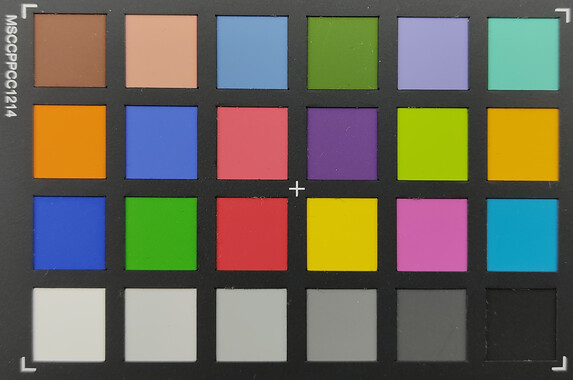
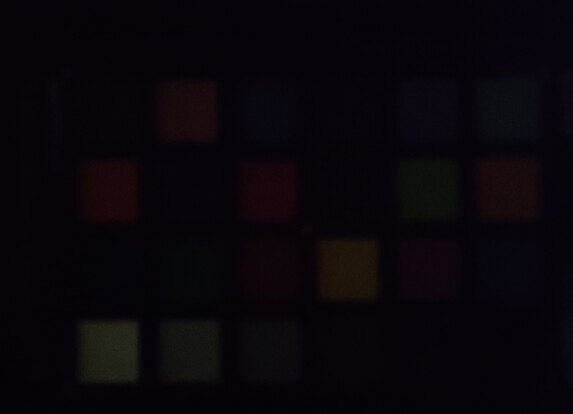
Accessories and Warranty – Case Included
The included silicone bumper found in the box next to a charger, a USB cable, and a SIM tool is a welcome bonus. A headset is not included.
Warranty depends on region and country. European customers get a full 24 months of warranty thanks to Xiaomi’s European branch office. The OEM also offers optional warranty extensions if desired.
Input Devices & Handling – Decent Touchscreen
The Redmi Note 9S’s large touchscreen is obviously not particularly well suited for small hands. It was very accurate and smooth overall. By default, it comes with a screen protector that had no impact on usability.
The fingerprint reader is located inside the recessed power button on the right-hand side, which turned out to be a well chosen position given that your right-hand thumb will rest on that area naturally when you hold the phone in your right hand, and when holding it in your left hand it is close enough to your left index finger. The sensor worked very fast and reliably.
A face detection feature is also available, although it does not seem to be particularly secure as it only takes a photo of our face as reference. Xiaomi claims that this method is nowhere near as secure as the other supported unlocking methods. In our test it worked reliably overall and we were unable to trick it into unlocking the phone with a selfie taken on another smartphone.
Display – Higher Contrast Would Have Been Nice
The IPS display runs at a native resolution of 2400x1080 pixels, which is not uncommon for this class. It can get very bright if you enable automatic brightness control and shine a bright light straight into the ambient light sensor. Brightness distribution was uniform and good overall.
On the flip side, the display’s black level of 0.56 nits was too high, resulting in an average contrast ratio. Consequently, colors are not particularly pronounced, and dark areas are rather grayish than black.
| |||||||||||||||||||||||||
Brightness Distribution: 94 %
Center on Battery: 622 cd/m²
Contrast: 1111:1 (Black: 0.56 cd/m²)
ΔE ColorChecker Calman: 3.98 | ∀{0.5-29.43 Ø4.77}
ΔE Greyscale Calman: 4.5 | ∀{0.09-98 Ø5}
114.9% sRGB (Argyll 1.6.3 3D)
Gamma: 2.206
CCT: 7361 K
| Xiaomi Redmi Note 9S IPS, 2400x1080, 6.7" | Motorola Moto G8 IPS, 1560x720, 6.4" | Huawei P40 Lite IPS, 2310x1080, 6.4" | Gigaset GS290 IPS, 2340x1080, 6.3" | Xiaomi Redmi Note 8 Pro IPS, 2340x1080, 6.5" | |
|---|---|---|---|---|---|
| Screen | 15% | 0% | 11% | -1% | |
| Brightness middle (cd/m²) | 622 | 504 -19% | 478 -23% | 465 -25% | 669 8% |
| Brightness (cd/m²) | 612 | 452 -26% | 448 -27% | 460 -25% | 630 3% |
| Brightness Distribution (%) | 94 | 83 -12% | 87 -7% | 88 -6% | 87 -7% |
| Black Level * (cd/m²) | 0.56 | 0.28 50% | 0.49 12% | 0.2 64% | 0.42 25% |
| Contrast (:1) | 1111 | 1800 62% | 976 -12% | 2325 109% | 1593 43% |
| Colorchecker dE 2000 * | 3.98 | 3.84 4% | 3 25% | 5.3 -33% | 4.8 -21% |
| Colorchecker dE 2000 max. * | 7.33 | 6.1 17% | 5.6 24% | 7.3 -0% | 9 -23% |
| Greyscale dE 2000 * | 4.5 | 2.7 40% | 4.1 9% | 4.2 7% | 6.2 -38% |
| Gamma | 2.206 100% | 2.235 98% | 2.26 97% | 2.09 105% | 2.24 98% |
| CCT | 7361 88% | 7125 91% | 7282 89% | 6558 99% | 7846 83% |
| Color Space (Percent of sRGB) (%) | 114.9 |
* ... smaller is better
Screen Flickering / PWM (Pulse-Width Modulation)
| Screen flickering / PWM not detected | |||
In comparison: 53 % of all tested devices do not use PWM to dim the display. If PWM was detected, an average of 8081 (minimum: 5 - maximum: 343500) Hz was measured. | |||
We found no evidence of PWM flickering. Response times were too high to satisfy the demands of competitive gamers. When tested with a spectrophotometer in combination with the CalMAN software we noticed some color deviations, particularly in red and orange hues. Grays were fairly accurate, and we were unable to detect any deviations with our naked eyes. A blue tint is not present on the Redmi Note 9S.
Display Response Times
| ↔ Response Time Black to White | ||
|---|---|---|
| 24 ms ... rise ↗ and fall ↘ combined | ↗ 9 ms rise | |
| ↘ 15 ms fall | ||
| The screen shows good response rates in our tests, but may be too slow for competitive gamers. In comparison, all tested devices range from 0.1 (minimum) to 240 (maximum) ms. » 53 % of all devices are better. This means that the measured response time is worse than the average of all tested devices (20.2 ms). | ||
| ↔ Response Time 50% Grey to 80% Grey | ||
| 44 ms ... rise ↗ and fall ↘ combined | ↗ 21 ms rise | |
| ↘ 23 ms fall | ||
| The screen shows slow response rates in our tests and will be unsatisfactory for gamers. In comparison, all tested devices range from 0.165 (minimum) to 636 (maximum) ms. » 73 % of all devices are better. This means that the measured response time is worse than the average of all tested devices (31.6 ms). | ||
Viewing angles are quite wide, and the picture remained undistorted even at very acute angles.
Outdoor usability was decent, and the device remained usable even on bright days. Unfortunately, its reflective display made it somewhat strenuous for our eyes and annoying to use in direct sunlight.
Performance – Snapdragon 720G with plenty of oomph
Qualcomm’s Snapdragon 720G is an SoC targeted specifically at gamers, as suggested by the G suffix at the end of its model name. Overall, it is a great match for the Redmi Note 9S as it offers a high level of performance and even managed to outperform some of its similarly priced competitors. That said the Huawei P40 Lite offered a bit more performance, albeit not enough to be noticeable in everyday use.
Graphics performance was more than adequate but not powerful enough to run demanding games smoothly in the display’s native resolution. Lowering your expectations and thus details should result in a smooth and enjoyable gaming experience.
| PCMark for Android | |
| Work performance score (sort by value) | |
| Xiaomi Redmi Note 9S | |
| Motorola Moto G8 | |
| Huawei P40 Lite | |
| Xiaomi Redmi Note 8 Pro | |
| Average Qualcomm Snapdragon 720G (9027 - 13821, n=7) | |
| Work 2.0 performance score (sort by value) | |
| Xiaomi Redmi Note 9S | |
| Motorola Moto G8 | |
| Huawei P40 Lite | |
| Gigaset GS290 | |
| Xiaomi Redmi Note 8 Pro | |
| Average Qualcomm Snapdragon 720G (7673 - 10181, n=7) | |
| AnTuTu v8 - Total Score (sort by value) | |
| Xiaomi Redmi Note 9S | |
| Motorola Moto G8 | |
| Huawei P40 Lite | |
| Gigaset GS290 | |
| Xiaomi Redmi Note 8 Pro | |
| Average Qualcomm Snapdragon 720G (253274 - 288306, n=5) | |
| Basemark GPU 1.1 | |
| 1920x1080 Vulkan Medium Offscreen (sort by value) | |
| Xiaomi Redmi Note 8 Pro | |
| Vulkan Medium Native (sort by value) | |
| Xiaomi Redmi Note 8 Pro | |
| 1920x1080 OpenGL Medium Offscreen (sort by value) | |
| Xiaomi Redmi Note 8 Pro | |
| Xiaomi Redmi Note 8 Pro | |
| VRMark - Amber Room (sort by value) | |
| Xiaomi Redmi Note 9S | |
| Xiaomi Redmi Note 8 Pro | |
| Average Qualcomm Snapdragon 720G (n=1) | |
Web-browsing performance was fairly high, particularly when taking the device’s low price into account. Websites loaded quickly and images rarely ever took visibly longer to load. Complex HTML5 content was rendered smoothly most of the time.
| Jetstream 2 - 2.0 Total Score | |
| Average of class Smartphone (23.8 - 387, n=147, last 2 years) | |
| Huawei P40 Lite (Huawei Browser 10.1.0.300) | |
| Xiaomi Redmi Note 9S (Chrome 81) | |
| Average Qualcomm Snapdragon 720G (37.8 - 54.4, n=4) | |
| Xiaomi Redmi Note 8 Pro (Chrome 78) | |
| Motorola Moto G8 (Chrome 81) | |
| JetStream 1.1 - Total Score | |
| Huawei P40 Lite (Huawei Browser 10.1.0.300) | |
| Xiaomi Redmi Note 9S (Chrome 81) | |
| Average Qualcomm Snapdragon 720G (59.7 - 94.7, n=5) | |
| Xiaomi Redmi Note 8 Pro (Chrome 78) | |
| Motorola Moto G8 (Chrome 81) | |
| Speedometer 2.0 - Result 2.0 | |
| Average of class Smartphone (15.2 - 643, n=119, last 2 years) | |
| Huawei P40 Lite (Huawei Browser 10.1.0.300) | |
| Xiaomi Redmi Note 9S (Chome 81) | |
| Xiaomi Redmi Note 8 Pro (Chrome 78) | |
| Average Qualcomm Snapdragon 720G (26.8 - 45.2, n=4) | |
| Motorola Moto G8 (Chome 81) | |
| WebXPRT 3 - Overall | |
| Average of class Smartphone (38 - 380, n=30, last 2 years) | |
| Huawei P40 Lite (Huawei Browser 10.1.0.300) | |
| Xiaomi Redmi Note 9S (Chrome 81) | |
| Average Qualcomm Snapdragon 720G (53 - 78, n=5) | |
| Xiaomi Redmi Note 8 Pro (Chrome 78) | |
| Motorola Moto G8 (Chrome 81) | |
| Octane V2 - Total Score | |
| Average of class Smartphone (2228 - 126661, n=194, last 2 years) | |
| Huawei P40 Lite (Huawei Browser 10.1.0.300) | |
| Xiaomi Redmi Note 9S (Chrome 81) | |
| Average Qualcomm Snapdragon 720G (11846 - 17734, n=5) | |
| Xiaomi Redmi Note 8 Pro (Chrome 78) | |
| Motorola Moto G8 (Chrome 81) | |
| Mozilla Kraken 1.1 - Total | |
| Motorola Moto G8 (Chrome 81) | |
| Xiaomi Redmi Note 8 Pro (Chrome 78) | |
| Average Qualcomm Snapdragon 720G (2532 - 3577, n=5) | |
| Xiaomi Redmi Note 9S (Chrome 81) | |
| Huawei P40 Lite (Huawei Browser 10.1.0.300) | |
| Average of class Smartphone (257 - 28190, n=154, last 2 years) | |
* ... smaller is better
When equipped with our microSD reference card the dedicated card reader worked very well. Unfortunately, its read and write performance was only average at best.
The integrated UFS 2.1 storage memory performed very fast for this price class but was still outperformed by the Huawei P40 Lite.
| Xiaomi Redmi Note 9S | Motorola Moto G8 | Huawei P40 Lite | Gigaset GS290 | Xiaomi Redmi Note 8 Pro | Average 128 GB UFS 2.0 Flash | Average of class Smartphone | |
|---|---|---|---|---|---|---|---|
| AndroBench 3-5 | -17% | 28% | -26% | 10% | -5% | 354% | |
| Sequential Read 256KB (MB/s) | 496.6 | 301 -39% | 913 84% | 274.2 -45% | 535 8% | 530 ? 7% | 2235 ? 350% |
| Sequential Write 256KB (MB/s) | 214.8 | 239 11% | 181.7 -15% | 196.8 -8% | 193.5 -10% | 212 ? -1% | 1871 ? 771% |
| Random Read 4KB (MB/s) | 137 | 57.3 -58% | 157.3 15% | 54.7 -60% | 156.2 14% | 130.6 ? -5% | 297 ? 117% |
| Random Write 4KB (MB/s) | 123.6 | 128.1 4% | 175.4 42% | 19.77 -84% | 180.4 46% | 101.2 ? -18% | 343 ? 178% |
| Sequential Read 256KB SDCard (MB/s) | 74.5 ? | 68.7 ? -8% | 82.6 ? 11% | 81.1 ? 9% | 71.6 ? -4% | 68.3 ? -8% | |
| Sequential Write 256KB SDCard (MB/s) | 54.9 ? | 48.7 ? -11% | 70.6 ? 29% | 73.9 ? 35% | 57.3 ? 4% | 53.2 ? -3% |
Gaming Performance – Gaming with 30 FPS
Using GameBench we attempt to determine how well the Redmi Note 9S performed in various games. Demanding games, such as PUBG Mobile or Asphalt 9, ran without any issues on our test device albeit only at 30 FPS. We noticed occasional minor frame drops but nothing to worry about. Overall, gaming on this device should not be a problem.
Both touchscreen and gyroscope worked very well and reliably.
Emissions – Redmi Phone without Throttling
Temperature
Temperatures remained slightly below the 40 °C threshold, resulting in a noticeably yet never uncomfortably warm case. Temperatures remained at elevated levels even when idle, and the Redmi phone never felt really cool to the touch.
We use GFXBench’s battery test to run the same benchmark 30x in a row and record the frames. If the results do not change it is safe to assume that the device in question is not thermal throttling under load. In the case of the Redmi Note 9S we are happy to report that we only noticed minor fluctuations in the recorded results, and overall performance was thus fairly consistent.
(+) The maximum temperature on the upper side is 39.9 °C / 104 F, compared to the average of 35.2 °C / 95 F, ranging from 21.9 to 247 °C for the class Smartphone.
(+) The bottom heats up to a maximum of 39.9 °C / 104 F, compared to the average of 34 °C / 93 F
(±) In idle usage, the average temperature for the upper side is 33.4 °C / 92 F, compared to the device average of 32.9 °C / 91 F.
Speakers
A single mono speaker is located at the bottom of the device. Its soundscape is not particularly powerful but is fairly balanced overall. Highs never get too uncomfortable, and the speaker is thus usable for occasional music playback as long as you keep your audio quality expectations in check.
External audio devices can be connected to either the 3.5-mm headphone jack or wirelessly via Bluetooth. Both worked very well, and the resulting audio quality was very clear.
Xiaomi Redmi Note 9S audio analysis
(±) | speaker loudness is average but good (81 dB)
Bass 100 - 315 Hz
(-) | nearly no bass - on average 64.7% lower than median
(+) | bass is linear (0% delta to prev. frequency)
Mids 400 - 2000 Hz
(-) | nearly no mids - on average 64.7% lower than median
(+) | mids are linear (0% delta to prev. frequency)
Highs 2 - 16 kHz
(-) | nearly no highs - on average 64.7% lower than median
(+) | highs are linear (0% delta to prev. frequency)
Overall 100 - 16.000 Hz
(-) | overall sound is not linear (119.7% difference to median)
Compared to same class
» 88% of all tested devices in this class were better, 8% similar, 3% worse
» The best had a delta of 11%, average was 35%, worst was 134%
Compared to all devices tested
» 97% of all tested devices were better, 3% similar, 1% worse
» The best had a delta of 4%, average was 24%, worst was 134%
Motorola Moto G8 audio analysis
(±) | speaker loudness is average but good (80.1 dB)
Bass 100 - 315 Hz
(-) | nearly no bass - on average 62.9% lower than median
(+) | bass is linear (0% delta to prev. frequency)
Mids 400 - 2000 Hz
(-) | nearly no mids - on average 62.9% lower than median
(+) | mids are linear (0% delta to prev. frequency)
Highs 2 - 16 kHz
(-) | nearly no highs - on average 62.9% lower than median
(+) | highs are linear (0% delta to prev. frequency)
Overall 100 - 16.000 Hz
(-) | overall sound is not linear (120.9% difference to median)
Compared to same class
» 89% of all tested devices in this class were better, 8% similar, 2% worse
» The best had a delta of 11%, average was 35%, worst was 134%
Compared to all devices tested
» 97% of all tested devices were better, 2% similar, 1% worse
» The best had a delta of 4%, average was 24%, worst was 134%
Battery Life – Great stamina thanks to a large battery
Power Consumption
Given its large display and its powerful SoC it is no surprise that the Redmi Note 9S’s overall power consumption was comparatively high across the board. The Huawei P40 Lite turned out to be significantly more energy efficient. Under load, we recorded a maximum power consumption of up to 7.5 W.
| Off / Standby | |
| Idle | |
| Load |
|
Key:
min: | |
| Xiaomi Redmi Note 9S 5020 mAh | Motorola Moto G8 4000 mAh | Huawei P40 Lite 4200 mAh | Gigaset GS290 4700 mAh | Xiaomi Redmi Note 8 Pro 4500 mAh | Average Qualcomm Snapdragon 720G | Average of class Smartphone | |
|---|---|---|---|---|---|---|---|
| Power Consumption | 7% | 24% | 19% | 10% | 20% | 5% | |
| Idle Minimum * (Watt) | 1.5 | 1.3 13% | 0.79 47% | 0.88 41% | 0.79 47% | 0.982 ? 35% | 0.847 ? 44% |
| Idle Average * (Watt) | 2.1 | 2 5% | 2.14 -2% | 2.05 2% | 2.32 -10% | 1.94 ? 8% | 1.446 ? 31% |
| Idle Maximum * (Watt) | 2.5 | 2.8 -12% | 2.23 11% | 2.1 16% | 2.38 5% | 2.06 ? 18% | 1.63 ? 35% |
| Load Average * (Watt) | 5.2 | 3.9 25% | 3.6 31% | 4.73 9% | 4.72 9% | 4.02 ? 23% | 6.95 ? -34% |
| Load Maximum * (Watt) | 7.5 | 7.2 4% | 5.17 31% | 5.61 25% | 7.68 -2% | 6.16 ? 18% | 11.3 ? -51% |
* ... smaller is better
Battery Life
The Redmi Note 9S is equipped with an unusually large 5,020 mAh battery, thanks to which it managed to run for an extended period of time and much longer than other competing devices. It lasted almost 20 hours in our Wi-Fi test and managed 4:39 hours of continuous gameplay or running demanding apps.
Charging the device with the included fast charger from near empty to full takes around 2 hours. However, topping up the device for just a few minutes will result in sufficient charge to last for a few hours of moderate use.
| Xiaomi Redmi Note 9S 5020 mAh | Motorola Moto G8 4000 mAh | Huawei P40 Lite 4200 mAh | Gigaset GS290 4700 mAh | Xiaomi Redmi Note 8 Pro 4500 mAh | |
|---|---|---|---|---|---|
| Battery runtime | -13% | -12% | -21% | -23% | |
| Reader / Idle (h) | 37.7 | 32.6 -14% | 35.9 -5% | 31.6 -16% | |
| H.264 (h) | 21.2 | 17.5 -17% | 19.6 -8% | 16.4 -23% | |
| WiFi v1.3 (h) | 19.8 | 16.5 -17% | 16.8 -15% | 15.6 -21% | 14.4 -27% |
| Load (h) | 4.7 | 4.6 -2% | 3.8 -19% | 3.5 -26% |
Pros
Cons
Verdict – A Lot to Offer
Xiaomi’s Redmi Note 9S is living proof that $200 will get a you a great smartphone in 2020, both in terms of size as well as in regard to equipment and connectivity. Granted, you should not expect LTE performance levels akin to high-end smartphones, Wi-Fi 6 or NFC.
What the Redmi Note 9S has to offer in return is a flexible and versatile camera array with multiple well-usable lenses. Again, do not expect the same level of photo quality as in much more expensive high-end smartphones but lowering your expectations ever so slightly will be more than enough to accept the camera system for what it is.
You will also get a ginormous battery, one that is at least partly responsible for the Redmi’s high weight, with almost 20 hours of runtime in our Wi-Fi test.
The Xiaomi Redmi Note 9S offers a decent camera and long battery life at a low price.
The bright display could have benefited from a higher contrast ratio. Location services were accurate enough for everyday use. Considering its price class, the Note 9S was fairly powerful overall. It does not thermal throttle under load and offered an up-to-date Android system at the time of writing.
Overall, the Redmi Note 9S deserves our full endorsement as it comes with great features at a low price.
Xiaomi Redmi Note 9S
- 05/19/2020 v7 (old)
Florian Schmitt


